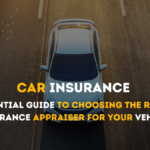Introduction
Driving your friend’s car may seem like a simple favor, but have you ever wondered about the potential insurance implications? Can you drive it safely without any worries? In this article, we will explore whether it is possible to drive your friend’s car and still be covered by insurance.
Insurance policies can vary greatly, so it is important to understand the specifics of yours. Some policies may provide coverage for occasional drivers, meaning that you can borrow someone else’s car and still be protected. However, other policies may not extend coverage to anyone other than the named insured.
It is also crucial to consider the level of coverage available. Even if you are allowed to drive your friend’s car, your policy might only provide minimum liability coverage. This means that any damages beyond that amount would have to be covered by your friend’s insurance or out of pocket.
Navigating the intricacies of insurance can be challenging, but understanding the details can protect you from unexpected situations. Join us as we delve into the topic of driving your friend’s car and insurance, exploring the potential risks and how to mitigate them.
Understanding the rules and regulations of borrowing a friend’s car
Borrowing a friend’s car can be a convenient and helpful arrangement, but it’s important to understand the rules and regulations surrounding this practice. The first step is to check your local laws and regulations regarding the use of someone else’s vehicle. In many places, there are specific requirements that must be met, such as having a valid driver’s license and ensuring that the vehicle is properly registered and insured.
It’s also crucial to have a clear understanding of your friend’s insurance policy. Many policies have restrictions on who can drive the insured vehicle, and some may even require the policyholder to be present when the car is being used. Failure to comply with these rules could result in the policy being voided or the insurance company refusing to cover any damages or injuries that occur while you’re driving.
Additionally, it’s important to consider the age and condition of the vehicle you’re borrowing. Older or less well-maintained cars may have different handling characteristics or safety features than what you’re used to, which could increase the risk of an accident. It’s a good idea to take some time to familiarize yourself with the car’s controls and features before hitting the road.
The importance of insurance coverage when driving someone else’s car
When it comes to driving someone else’s car, insurance coverage is of the utmost importance. Without proper protection, you could be held liable for any damages or injuries that occur while you’re behind the wheel. This could result in significant financial and legal consequences, potentially putting your own assets and future at risk.
Even if you have your own car insurance policy, it may not provide coverage for driving a friend’s vehicle. Many policies have specific exclusions or limitations when it comes to non-owned cars, so it’s essential to review the details of your coverage before borrowing a friend’s car.
In addition to the potential legal and financial risks, driving without insurance can also have practical consequences. If you’re involved in an accident, you may be unable to get your friend’s car repaired or replaced, leaving them without transportation and potentially creating tension in the friendship.
Types of insurance coverage that may protect you when driving a friend’s car
There are a few different types of insurance coverage that may provide protection when driving a friend’s car. The first is your own car insurance policy. While many policies have exclusions for non-owned vehicles, some may offer limited coverage for occasional or incidental use of someone else’s car.
Another option is your friend’s insurance policy. If the vehicle you’re borrowing is properly insured, their policy may extend coverage to you as a permissive driver. This means that their liability, collision, and comprehensive coverage would apply in the event of an accident or incident.
Some insurance companies also offer non-owner car insurance policies, which provide liability coverage for drivers who don’t own a vehicle but may need to borrow or rent one from time to time. This type of policy can be a good option if you don’t have your own car insurance or if your policy doesn’t cover driving someone else’s vehicle.
Checking if you’re covered under your friend’s insurance policy
Before borrowing your friend’s car, it’s crucial to check whether you’re covered under their insurance policy. This can be a complex and confusing process, as policies can vary greatly in their terms and conditions.
The first step is to ask your friend to provide you with a copy of their insurance policy or to at least share the name of their insurance provider and the policy number. Once you have this information, you can contact the insurance company directly and inquire about the coverage for permissive drivers.
It’s important to be specific in your questions, asking about the limits of liability coverage, whether collision and comprehensive coverage extend to you, and any potential exclusions or restrictions. Some insurance policies may only provide minimum liability coverage for non-named drivers, while others may offer more comprehensive protection.
The risks of driving without proper insurance coverage
Driving without proper insurance coverage can expose you to significant risks and potential consequences. If you’re involved in an accident while driving your friend’s car, you could be held liable for any damages or injuries, even if the accident wasn’t your fault.
Without insurance, you may be required to pay for the repairs to your friend’s vehicle, as well as any medical bills or property damage incurred by the other party. This can quickly add up to tens of thousands of dollars or more, which could have a devastating impact on your financial well-being.
In addition to the financial risks, driving without insurance can also result in legal penalties. Depending on your location, you may face fines, license suspension, or even criminal charges for operating a vehicle without the required coverage. These consequences can have long-lasting effects on your driving record and ability to obtain insurance in the future.
Steps to take before driving your friend’s car
Before you get behind the wheel of your friend’s car, there are several important steps you should take to ensure that you’re covered and protected:
- Review your own insurance policy: Carefully review the terms and conditions of your own car insurance policy to see if it provides any coverage for driving a non-owned vehicle.
- Confirm your friend’s insurance coverage: Ask your friend for a copy of their insurance policy and contact their insurance provider to verify that you’re covered as a permissive driver.
- Familiarize yourself with the vehicle: Take some time to get acquainted with the car’s features, controls, and handling characteristics before driving it. This can help you avoid any unexpected surprises on the road.
- Obtain permission: Make sure to get explicit permission from your friend to borrow their car. This can help avoid any misunderstandings or legal issues down the line.
- Document the vehicle’s condition: Before and after driving the car, take photos or videos to document the vehicle’s condition. This can help protect you in case of any disputes or claims.
What to do in case of an accident or damage to your friend’s car
If you’re involved in an accident or cause any damage to your friend’s car while driving it, it’s important to know what steps to take. First and foremost, remain calm and call the police to report the incident. Provide the authorities with all the relevant information, including your friend’s insurance details and the vehicle’s registration.
Next, notify your friend as soon as possible about the situation. Be honest and transparent about what happened, and provide them with any necessary information or documentation. Depending on the extent of the damage, your friend may need to file a claim with their insurance provider.
If you’re covered under your friend’s insurance policy or your own policy, the insurance company will likely handle the claims process and repairs. However, if you’re not covered, you may be responsible for the full cost of the repairs or any damages to the other party’s vehicle or property.
In the event of an accident, it’s also important to gather as much information as possible, including the contact details of any other drivers involved, witness statements, and photographs of the scene. This can help support your case and ensure that the claims process goes as smoothly as possible.
Additional factors to consider when driving someone else’s car
In addition to the insurance-related considerations, there are a few other factors to keep in mind when driving a friend’s car:
- Vehicle maintenance and condition: Make sure to check the car’s fluid levels, tire pressure, and overall condition before driving. Driving a poorly maintained vehicle can increase the risk of breakdowns or accidents.
- Driving habits and preferences: Your friend’s driving habits and preferences may be different from your own. Be mindful of their preferred speed, braking style, and other behaviors to ensure a safe and comfortable driving experience.
- Parking and storage: Consider where you’ll be parking the car and how you’ll store it when not in use. Avoid leaving it in high-risk areas or situations that could lead to theft or damage.
- Communication and trust: Maintain open communication with your friend throughout the borrowing process. Be transparent about any issues or concerns, and work together to ensure the safe and responsible use of the vehicle.
- Liability and responsibility: Remember that as the driver, you’re ultimately responsible for the car and any incidents that occur while you’re behind the wheel. Be prepared to take on that responsibility and act accordingly.
Alternatives to driving someone else’s car without insurance
If you’re not comfortable with the insurance implications of driving a friend’s car, there are several alternatives you can consider:
- Rent a car: Many car rental companies offer affordable options for short-term rentals. This can provide you with the transportation you need without the insurance risks associated with borrowing a friend’s vehicle.
- Use public transportation: Depending on your location, public transportation options like buses, trains, or rideshare services may be a convenient and cost-effective alternative to driving.
- Ask your friend to drive: If your friend is available, consider asking them to drive you to your destination instead of borrowing their car. This eliminates the insurance concerns and ensures that the vehicle is being operated by the policyholder.
- Explore car-sharing or ride-hailing services: Services like Zipcar, Turo, or Uber can provide you with access to a vehicle without the need for personal insurance coverage.
- Borrow a car from a family member: If you have a family member with a vehicle and insurance policy that allows you to drive, this may be a safer option than borrowing a friend’s car.
Conclusion: Staying safe and protected when borrowing a friend’s car
Driving your friend’s car can be a convenient and helpful arrangement, but it’s crucial to understand the potential insurance implications. By taking the time to review your own insurance policy, confirm your friend’s coverage, and familiarize yourself with the vehicle, you can help ensure that you’re protected and avoid any unexpected legal or financial consequences.
Remember, the rules and regulations surrounding the use of someone else’s car can vary greatly depending on your location and the specific terms of your insurance policies. It’s important to do your due diligence and make informed decisions to keep yourself and your friend’s vehicle safe.
If you’re not comfortable with the insurance risks, consider exploring alternative transportation options or asking your friend to drive you instead. By prioritizing safety and responsible driving, you can maintain your friendship and enjoy the benefits of borrowing a car without jeopardizing your financial or legal well-being.







